Day 10 – The discovery of a Roman coin! – by Phoebe
The archaeology of the sections so far…
The excavation has reached it’s tenth day here at Basing House, and as all the sections are hitting their respective base layers it is easy to see from looking at the section edges of the trench as well as the finds from each of the contexts we have removed, the changing archaeology of each soil layer and perhaps even their era of human activity…

The site so far…
1. The top of the section marks the civil war defensive bank, possibly a large layer of buried soil has since accumulated on top of the previously excavated site. This large soil layer owes to large numbers of plant roots and grasses making up the turf layer, and tends not to have many serious finds.
2. The second layer shows some of the first evidence of earlier human activity, as it is inundated with brick and burnt flint fragments across the site. The previous excavations show at least 5 barrow-loads of burnt flint were extracted from the trench possibly dating back to the Roman period, but we’re still finding it in abundance on site today! These pieces of flint we’re removing are easily smashed up and sharp and finding flakes and worked fragments is not necessarily a rarity. Apart from the flint and brick we are also finding evidence of roman pottery production from pieces of pot rim all the way from the Iron Age, as well as the odd few old roman coins! The earlier excavation recorded 4 of these coins but earlier today we did find another.
3. The next layer is more chalky and possibly a more believable base layer due to it being extensive in the pits, maybe even dating back to the Roman era also.
4. Beneath this chalky layer is what we’re currently looking to find in all the sections, the black soil layer. Elsewhere on site this base layer has been found, but another base layer we’ve been finding is more of natural orange clay.
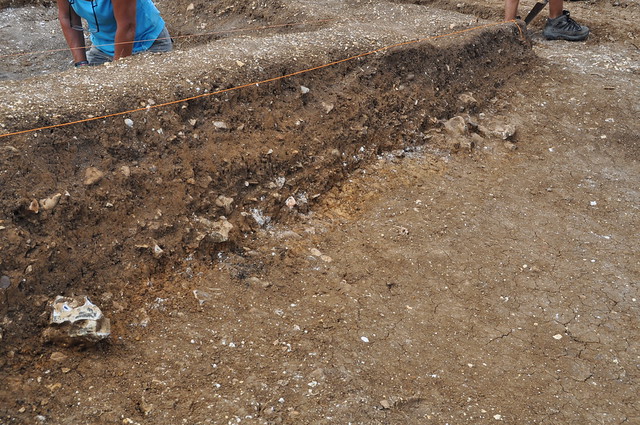
The side of the trench!
The Post Hole…
In one of our more extensive sections we have evidence of a post hole, this would have been a wooden post surrounded by large pieces of flint, which we can now see jutting out from the trench edge from within a baulk. These large fragments of flint would have been rammed in around the wooden post to keep it upright and in place; it would have needed to be completely stable and upright. No evidence of wood seems to remain from what we’ve seen so far, which suggests that the post was probably removed from the hole rather than have rotted away.
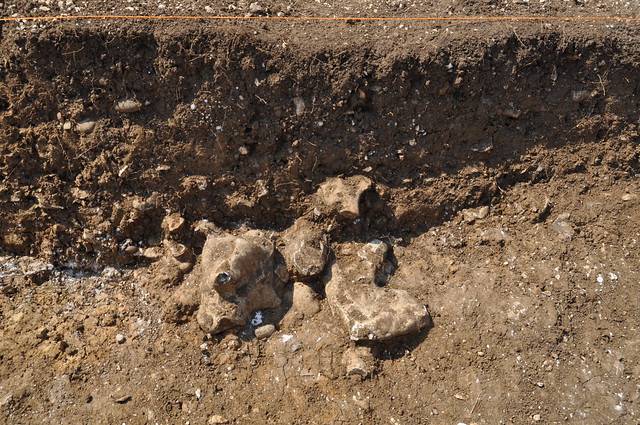
The Post Hole…
The Roman Coin…
Earlier today a very small Roman coin was found, believed to be from the 3rd Century AD. The Romans conquered Britain in 43AD and due to later metal shortages coins did tend to get smaller, maybe explaining this coins tiny size! This however could be explained further by the diversity of mints across Britain, owing to different kinds of coins dependent on location. We’re finding this coin hard to identify due to it’s condition and limited lettering, but the popular opinion at the moment due to dates is that this coin would have held the image of Lucius, and due to it’s location at Basing House could have come from the Winchester mint.
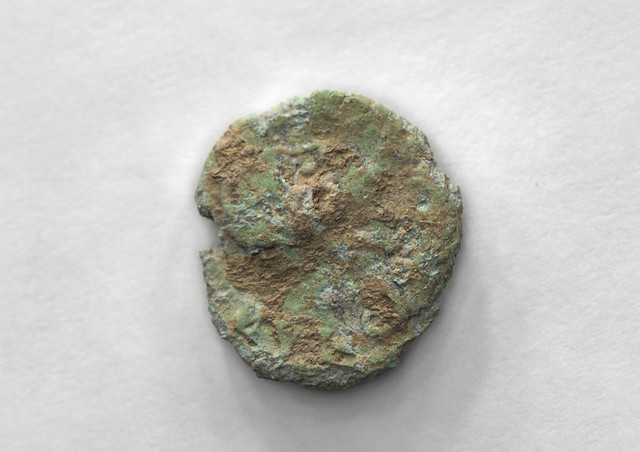
The Roman Coin!
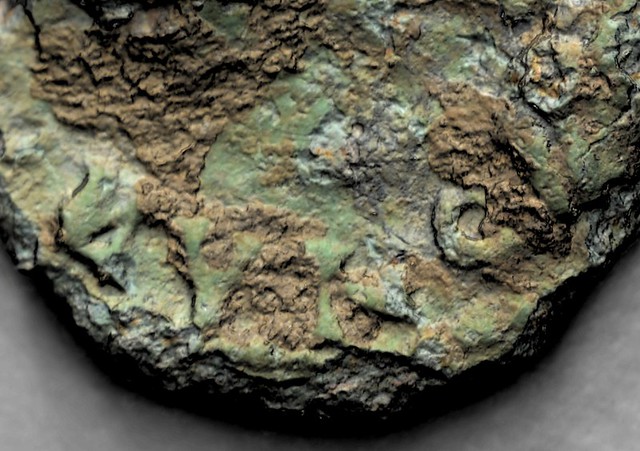
Close up of the Roman Coin, can you see the lettering?
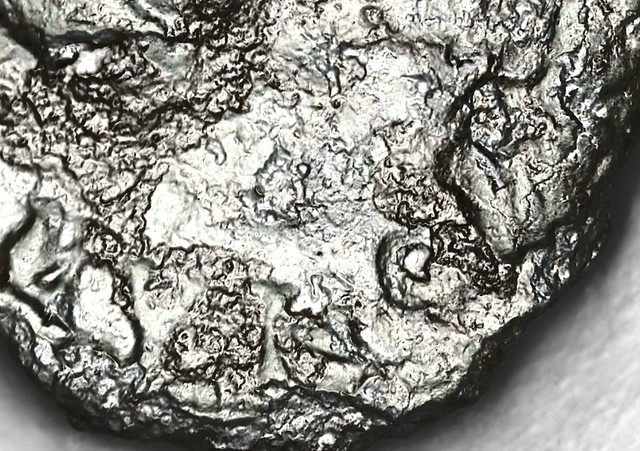
- A picture of the coin zoomed in…
Filed under: Day Ten, Student Reporter, Summer Excavation Tagged: archaeology, Basing House, coin, post hole, roman, roman coin, sections, student-reporter, undergraduate
